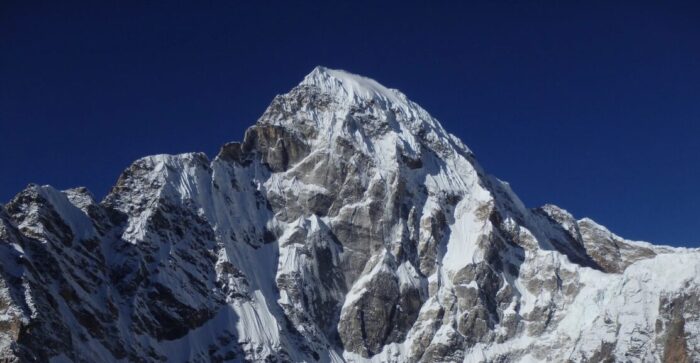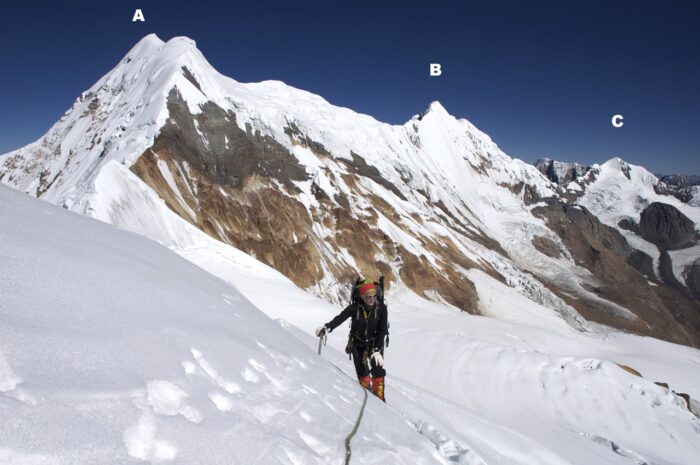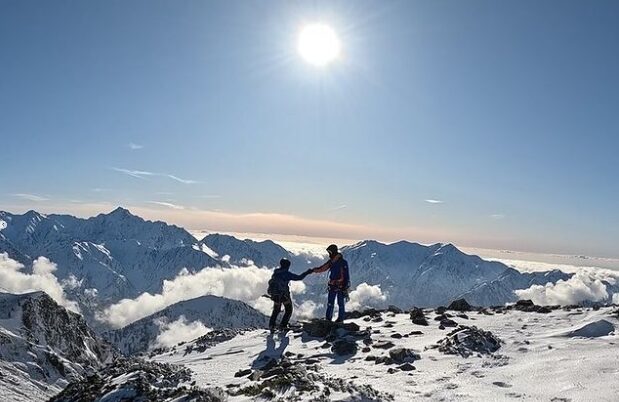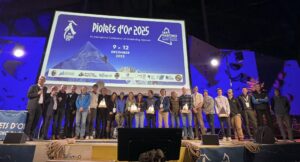Several small Japanese teams are currently in Nepal, leading some of the most interesting expeditions of the season. The climbs vary in difficulty but share the common values of imagination, independence, and loyalty to the standards of classical mountaineering.
This fall, a significant number of the climbing permits for lesser known peaks are for these Japanese expeditions. More than other countries, Japan is demonstrating that there remains life in the Himalaya beyond the 8,000’ers.
Nilgiri North
The powerful Japanese pair of Tatsuya Aoki and Tayuka Mitoro will take on 7,061m Nilgiri North. Mitoro was the late Kazuya Hiraide’s partner on his first attempt on Karun Koh in Pakistan.
Nilgiri North lies in the Annapurna massif and is the highest peak of the Nilgiri Himal. It was first climbed by legendary alpinist and Annapurna pioneer Lionel Terray in 1967 with two Dutch partners. In the 1970s, Japanese expeditions made the first ascents of Nilgiri South and Nilgiri Central.
According to their latest update, the climbers reached base camp on September 30.
Mt. Pandra
Another strong team is attempting the 1,000m+ east face of Mt. Pandra, sometimes spelled Pandora — a beautiful 6,850m peak near Kangchenjunga. One of the climbers, Akihiro Oishi, explained that the expedition is a tribute to the late Kei Taniguchi, the former partner of Kazuya Hiraide, who died this summer on K2. She was also Oishi’s mentor.

Mt. Pandra. Photo: Koji Hagiwara
Taniguchi attempted the face with Junji Wada in 2015. After returning, she wrote, “Pandora’s box has been opened. I will definitely return to check what’s inside.”
Sadly, a month after returning to Japan, Taniguchi fell to her death while climbing Mount Kurodake near Hokkaido. She was 43 years old.
Oishi and his team hope to finish the task that Piolet d’Or winner Taniguchi started.
Phungi Peak
The students’ section of the Japanese Alpine Club is targeting Phungi Peak in the Annapurna range. Climbers are Takumi Inoue (leader), Ryoya Odaka, Fumiya Yokomichi, Masahiro Nakazawa, and Taiyo Ashizawa. They left for Nepal on September 5.

Members of the Pungi Peak expedition and friends in Japan. Photo: Japanese Alpine Club
Sanctuary Peak
The Himalayan Camp, a project aimed to introduce young climbers to Japan’s mountain culture, has 6,207m Sanctuary Peak in midwestern Nepal as its 2024 goal. The Nepal Himal Peak Profile lists no previous ascents, although the American Alpine Journal registers an expedition led by Paulo Grobel that reportedly climbed and named Sanctuary Peak in 2012.
Grobel’s team spoke of a moderately difficult ridge in the rarely visited Kanjiroba range. They named the col leading to the ridge as the Japanese Col, after the Japanese pioneers who explored the area in the 1950’s.
“The Japanese…always seem to be ahead of the curve when it comes to exploration,” Grobel noted at the time.

The peaks climbed by Paulo Grobel’s expedition in 2012. They named the highest of them Sanctuary Peak. Photo: Paulo Grobel/AAJ
Grobel, a French climber who focused on less explored areas, didn’t mention the altitude of the peaks they climbed. However, he did reference an unclimbed 6,207m peak that was the expedition’s first choice. Ultimately, they couldn’t reach it because of an impassable glacier.
Unclimbed or not — we will wait for reports — the goal seems ideal for the Himalayan Camp. Yasuhiro Hanatani started the project in 2015. The organizers select a group of young climbers in their 20s and 30s and train them for a year. It culminates in an expedition to a 6,000m meter peak in the Himalaya.






